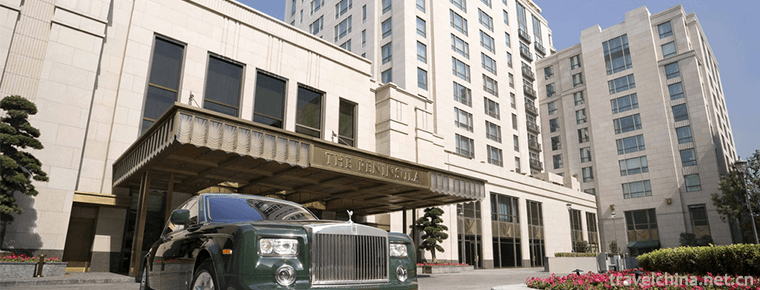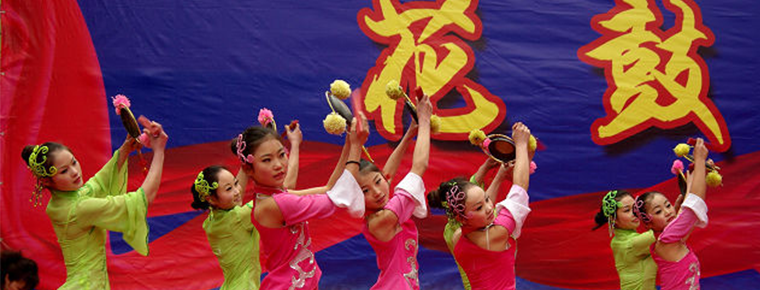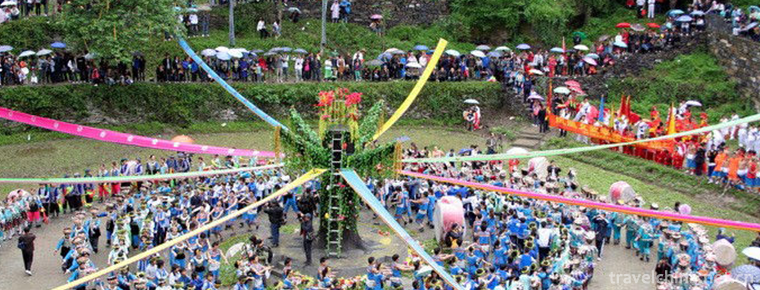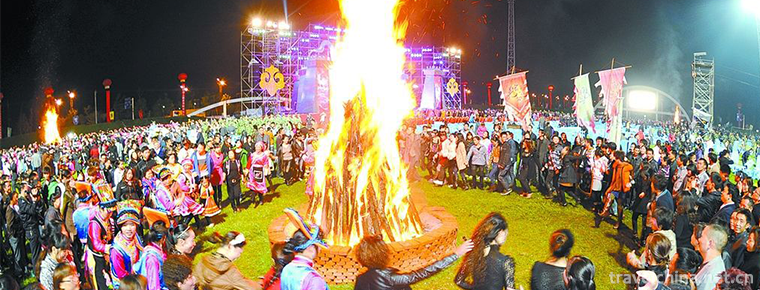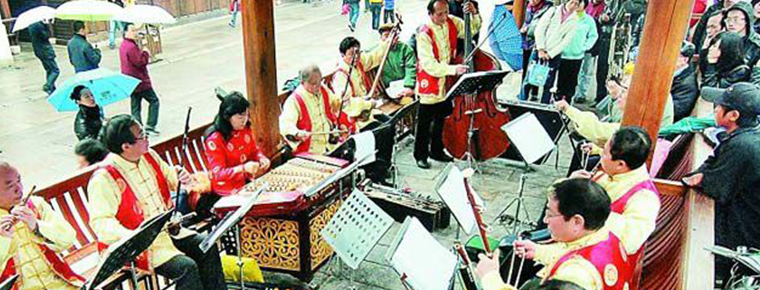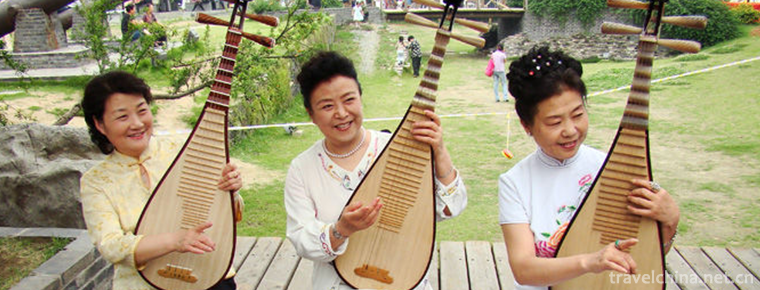Buyi Folk Songs
Buyi Folk Songs
Bouyei folk songs have special features, such as ancient songs, narrative songs, love songs, wine songs and labor songs; solo, duet, chorus and duet in form; tunes are divided into major and minor. Every festival, singing day and night.
On June 7, 2008, Buyi folk songs were listed in the second batch of national intangible cultural heritage list with the approval of the State Council.
historical origin
The Buyi nationality has a relationship with the ancient "bureaucrats", "Baiyue" and "Baipu". After the founding of the People's Republic of China, according to the wishes of the people, the people of the People's Republic of China unified the transliteration of their common self-pronounced "Buyi" as their ethnic name, "Buyi" is a variant of "nationality, people", "Yi" means "Yue", "Buyi" means "Yi (Yue) people".
Most of the houses in Buyi area still keep the old form of "dry railings". Their buildings are all wooden structures. Generally, they start at the bottom and erect roof trusses. They are built on the opposite side of the building with tiles or fir bark on the top. There are three or five different buildings. Upstairs residents, the bottom of livestock, poultry, farm tools, set up Chunjie, mills and so on. In addition, some Buyi areas use stone as the main building material, known as "Stone Village".
artistic characteristics
The culture and art of the Buyi nationality are rich and colorful. Folk songs have special features, such as ancient songs, narrative songs, love songs, wine songs and labor songs; solo, duet, chorus and duet in form; tunes are divided into major and minor. Every festival, singing day and night.
The Buyi people like singing. The tunes of folk songs vary from place to place. Folk songs in the same area also have different tunes because of the different lyrics, singing occasions and singing methods. It presents a hundred flowers blooming, each with its own characteristics.
Folk song classification
Major and minor: Mainly popular in the Buyi ethnic areas of the counties of Ceheng, Wangmu and Luodian on the North Bank of Hongshui River. Major tunes are widely used, including narrative, toast, greeting and seeing off guests, reasoning, and sometimes love songs. Major tunes generally have a range of only five degrees, so they are stable and quiet. The minor mainly sings love songs, the tone is more developed, and the range is extended to eight degrees, so the singer is cheerful and enthusiastic, with the style of folk songs. The singer often uses falsetto singing at the soprano and the end, which has a special interest. Because of the differences in popular areas, tunes are often different.
Big song and small song: mainly popular in Libo, Dushan and Zhou Tan of Sandu in southern Guizhou, are two singing forms with multi-voice structure in Buyi folk songs. The main difference is that the big song has a song head and a song tail to greet relatives and friends, four or six sentences a song; the small song has only a song tail without a song head, generally only four sentences. Big songs are sung in public with more serious content. They are mostly used in wine songs, narrative songs, greeting guests and celebrating greetings. The structure of the songs is relatively large and long, so they are called "Big Songs". Small songs are mostly paired pairs of young men and women when they talk about love. The structure of songs is relatively short, so they are called "small songs". The big song and the small song are all three-degree and two-degree intervals which are used repeatedly.
Ming and Tuqu: This is the collective name of Buyi folk songs sung in Chinese and in national languages in the suburbs of Guiyang. "Ming Song" is sung in Chinese. It can be divided into "Paige" and "Tai Song" according to the content of the lyrics. It can also be divided into "Siping Tune", "Three Drops of Water" and "Wine Song" according to the characteristics of the melody. "Tuge" refers to the Buyi language singing, according to the Buyi tone of the lyrics, line tune, long voice, short voice, more than 30 beats of the tune, less than 167 beats, depending on how much the lyrics stretch, there is no fixed, mostly used to sing traditional ancient songs.
Huishui Mountain Song: commonly known as "Haohuahong" tone, popular in Huishui, Changshun, Guiyang, Longli, Guiding and other counties (cities) Buyi ethnic areas, basically summarizes the style and features of Buyi folk songs in this area. The melody is a four-tone feather mode, with an octave range of motion; tortuous and leisurely. The lyrics are generally seven words and eight sentences. They are vivid, vivid and euphemistic. They are very popular and widely spread. Musicians have adapted or created their tunes into chorus, dance music, acrobatics music, film and television music, which are very popular among the masses.
Pange: Buyi traditional folk songs. It's a song that interrogates each other in the form of singing. When young people first make friends, they can use the form of Pan songs to know each other's situation, such as asking each other's name, what village they live in and so on. Old people often sing on a disc, and they often ask and answer each other in festive occasions to show the singers'ability to adapt themselves to changes. Pange has a wide range of contents, such as astronomy, geography, mountains, plants and so on. In addition, singing riddles is also a form of Pan songs.
Twelve couplets: a kind of Buyi love song, popular in Wangdao, Luodian, Ceting and other counties of Guizhou Province. A group of people compiled love songs into a systematic program. When they got married and set up a new house, the host invited them to sing. Generally, two people were singing in pairs on each side. The female singer is sitting in the bride's room, while the male singer is sitting on the wall next to the fire in the hall. The content is to describe in detail the process of love between young men and women as twelve questions and answers. The twelve pairs of songs sung are: Questioning (Preface), Questioning (Inquiry), Questioning (Compliment), Questioning Horse (Singing Flowers and Fruits of the Twelve Seasons), Letter Sending (Letter Delivery), Letter Exchange (Exchange of Letters), Questioning (Separation), Questioning Peng (Meeting), Questioning (Anti Marriage), Questioning and Examination Double (Lawsuit), Questioning (Entry and Evasion), Questioning (Divorce and Evasion Capital). If they fail, they will meet and die, and they will fly together. Twelve pairs of songs, rich in imagination and exciting lyrics, can be sung for seven or eight consecutive days. They are the main forms of entertainment of Buyi people in Luodian, Wangmao and Banting counties, and are quite common.
Folk song distribution
In addition, in Zhenning, Guanling, Zhenfeng and Anlong, Anshun and Pingba, as well as Luoping in Yunnan and Ningnan in Sichuan, there are different folk tunes, which also have their own characteristics.
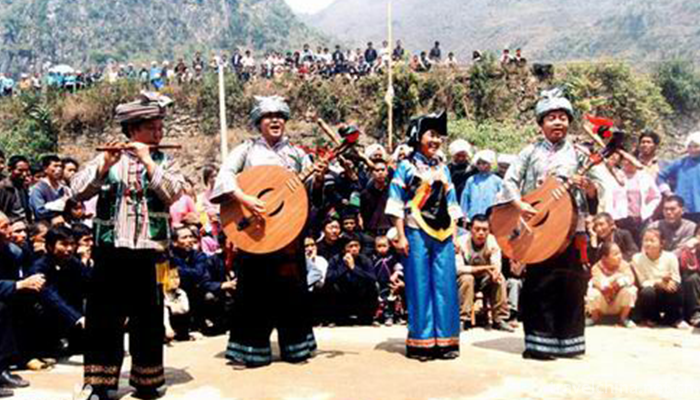

Buyi Folk Songs
-
The Peninsula Shanghai
Shanghai Peninsula Hotel is located on the Bund, which has a long history. It is the only new building on the Bund in 60 years. It can enjoy the Grand View of the Bund, Huangpu River, Pudong
Views: 265 Time 2018-12-16 -
Tibetan folk songs
Tibetan folk song is a magnificent flower in Tibetan folk literature, with profound ideological and high artistic quality. Throughout the development process of Tibetan folk songs
Views: 237 Time 2019-04-15 -
Hua gu deng Flower drum lantern
Flower drum lantern, a traditional dance in Bengbu City, Fengtai County and Yingshang County, Anhui Province, is one of the national intangible cultural heritage.
Views: 282 Time 2019-05-04 -
Lingqiu Luoluo Tune
Lingqiu Luoluo Opera evolved from Yiyang Opera and flourished during Qianlong Period of Qing Dynasty. From the end of Qing Dynasty to the Republic of China, it gradually declined. Luoluo tune is sung
Views: 384 Time 2019-05-13 -
Lu Opera
Luju opera, formerly known as "pour seven operas", is commonly known as "small opera", "prayer and sacrifice opera", "small pour opera", "small barbaric op
Views: 154 Time 2019-05-15 -
Miao Flower Jumping Festival
Flower Dancing Festival is a traditional festival of the Miao people in Anshun. Legend has it that Yang Lu, a hero of the Miao people, rose up. Till now, Huashan, outside the North Gate of Anshun, is
Views: 247 Time 2019-06-05 -
Qiang Nationality Year
The Qiang Year is a traditional festival of the Qiang people, also known as the Year of the Youth, which is held on October 1 of the lunar calendar every year. In Maoxian area, there are special regul
Views: 197 Time 2019-06-10 -
Ten times of music
Shifan music is a traditional instrumental music spread by Hakkas in Fuzhou and Western Fujian Province. It has been circulated since the middle of Daoguang in the Qing Dynasty. The origin of Shifan m
Views: 334 Time 2019-06-15 -
Taihao Fuxi Festival
Taihao Fuxi Festival is a traditional folk custom and folk sacrificial activity with a long history. Fuxi was the founder of Chinese civilization. He taught shareholding, tools, farming, marriage, fam
Views: 213 Time 2019-06-18 -
Yangzhou Tanci
Yangzhou's performance of ci-poems is mainly based on speech and supplemented by singing and playing. The representative bibliographies are "Double Gold Ingot", "Pearl Tower", &quo
Views: 389 Time 2019-07-10 -
University Of International Business And Economics
The University of Foreign Economic and Trade is a national key university directly under the Ministry of Education. The first batch of "211 Project" and the first batch of "double first
Views: 132 Time 2019-09-22 -
Daofu steamed bun with beef and mutton
Steamed bun with beef and mutton is a special traditional delicious food of Hui nationality. It is famous at home and abroad for its strict selection of materials, cooking essence, rich nutrition and mellow taste. The eating method of beef and mutton steamed
Views: 371 Time 2020-12-06
